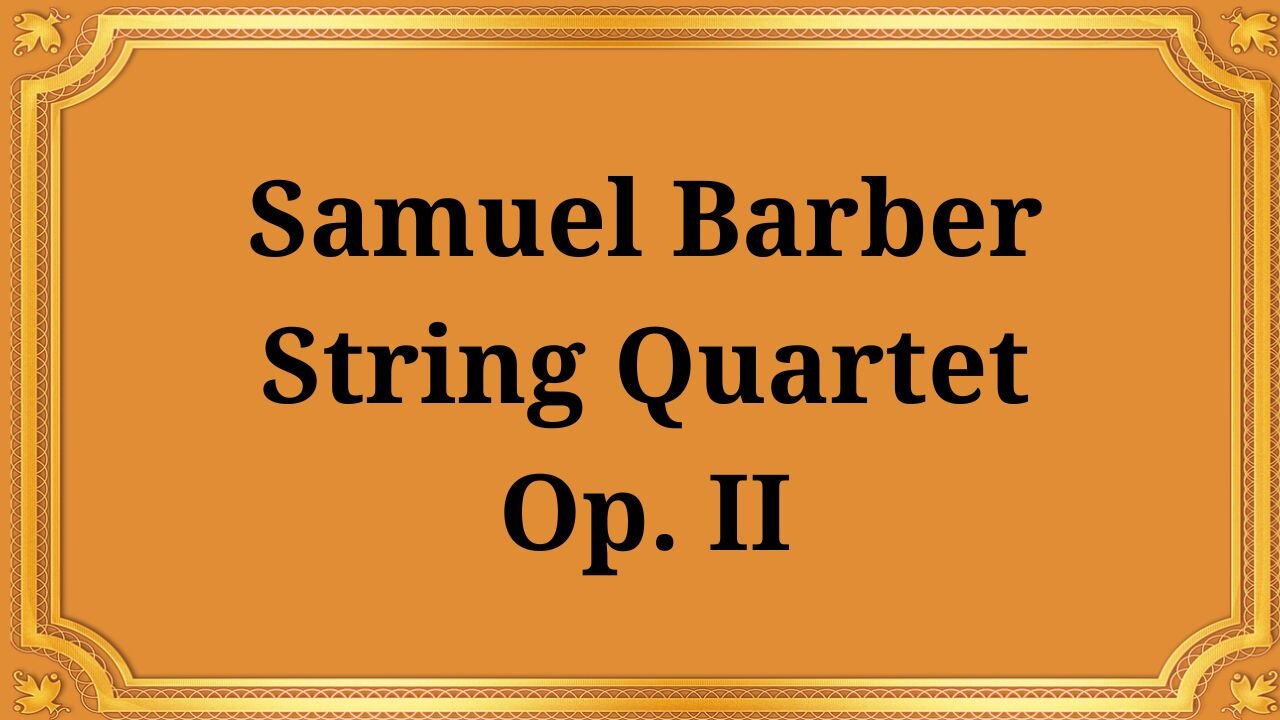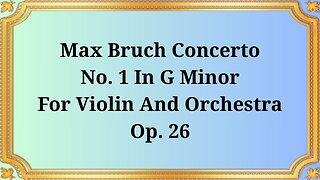Premium Only Content

Samuel Barber String Quartet, Op. II
#Classical #Baroque #Samuel_Barber #String_Quartet #American_Modernism #Chamber_Music #Rarity #20th_Century_Composers
Date of publication 1948
String Quartet Stradivari Records
Samuel Barber's String Quartet, Op. 2, is a landmark early work by one of the most distinguished American composers of the 20th century. Composed in 1935–36, the quartet showcases Barber's gift for intimate musical dialogue, lyrical clarity, and emotional intensity—all before he achieved wider fame with works such as Adagio for Strings. Although compact in length, Op. 2 traverses a broad expressive arc, balancing between ardent lyricism and tense neoclassical craftsmanship.
Born in Pennsylvania in 1910, Barber studied at the Curtis Institute and quickly attracted attention for his refined melodic sensibility and precise formal instincts. Op. 2, a quartet from his student days, reveals his early formal discipline and penchant for concentrated musical argument. Written for string quartet (two violins, viola, cello), the work embodies Barber’s direct approach to musical storytelling: brief, declarative statements, clear motivic coherence, and the ability to convey profound emotion using seemingly limited means.
Key Features:
- Motivational economy: a small set of melodic units are developed through variations, inversions, augmentations, and rhythmic elaboration, giving the quartet a coherent unity.
- Lyrical Lines: Barber's characteristic melodic singing gesture appears early, often in the first violin part, with expressive, drawn-out phrases contrasting with sharper, more forceful gestures. - Harmonic Language: The harmony gravitates toward the tonal centers of late Romanticism and the early 20th century, with moments of modal intonation and subtle chromatic coloring that heighten the emotional intensity without resorting to overt dissonance.
- Rhythm and Texture: The quartet employs a variety of textures, from pairs of instruments to rapid tremolandi and fluid counterpoint, to set the momentum while maintaining the intimate balance of chamber music.
- Emotional Trajectory: The music moves through tenderness and introspection, periodic anxiety and climactic warmth, often returning to a consoling, song-like refrain.
Op. 2 heralds Barber’s mature voice – a deft combination of lyrical beauty, clear formal control and personal expressiveness. It stands alongside Barber’s other early chamber works, testifying to his gift for shaping emotional content into compact, architecturally informed structures. For listeners interested in Barber’s evolution, Op. 2 offers a key window into the stylistic transition from his early years of study to the more expansive, romantic moods of his later string and orchestral music.
Dear listeners, you have the opportunity to support the channel:
https://t.me/rad_siar_al_bot
https://destream.net/live/RadSiarAl/donate
https://www.donationalerts.com/r/radsiaral
-
 24:35
24:35
Classical music_Music Inspiration
26 days agoMax Bruch Violin Concerto No. 1 in G minor, Op. 26
871 -
 LIVE
LIVE
TimcastIRL
1 hour agoTrump DOJ To Ban Trans People From Owning Guns After Catholic School Shooting | Timcast IRL
24,201 watching -
 LIVE
LIVE
The Quartering
49 minutes agoBaldur's Gate 3 First Playthrough!
262 watching -
 LIVE
LIVE
Rallied
3 hours ago $0.76 earnedWarzone Solo Challenges
406 watching -
 2:04:02
2:04:02
Glenn Greenwald
3 hours agoTrump and Rubio Apply Panama Regime Change Playbook to Venezuela; Michael Tracey is Kicked-Out of Epstein Press Conference; RFK Senate Hearing | SYSTEM UPDATE #508
60.7K55 -
 57:40
57:40
MattMorseTV
2 hours ago $2.84 earned🔴Trump just SHATTERED the RECORD.🔴
9.69K47 -
 LIVE
LIVE
Total Horse Channel
5 hours ago2025 CSI3* A Coruña Porsche - Grand Prix
56 watching -
 LIVE
LIVE
megimu32
1 hour agoOTS: Mighty Morphin Power Rangers & the 90s Movie That Defined a Generation
315 watching -
 LIVE
LIVE
Badlands Media
15 hours agoThe SITREP Ep. 128
1,098 watching -
 LIVE
LIVE
BubbaSZN
1 hour ago🔴 LIVE - FORTNITE WITH NEW KEYBOARD
101 watching